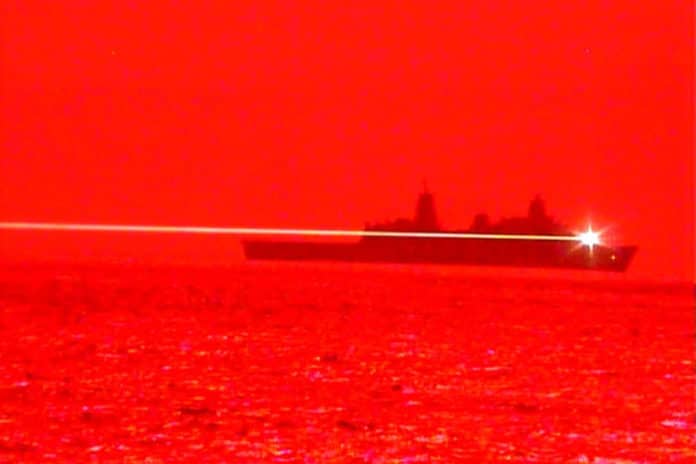The US Navy has successfully tested a new high-energy laser weapon installed on a warship that can destroy aircraft in mid-air. On May 16, the amphibious transport dock ship USS Portland – LPD 27 – disabled an unmanned aerial vehicle (UAV) using a high-energy class solid-state laser – Technology Maturation Laser Weapon System Demonstrator (LWSD) MK 2 MOD.
The laser weapon system emits light to an unmanned plane target until the fire burns and disappears.
“By conducting advanced at sea tests against UAVs and small craft, we will gain valuable information on the capabilities of the Solid State Laser Weapons System Demonstrator against potential threats,” said Capt. Karrey Sanders, commanding officer of USS Portland.
According to the Navy, the weapon system is being developed due to the “increasing numbers of threats,” which include UAVs, armed small boats, and adversary intelligence, surveillance, and reconnaissance systems.
The Navy hopes that the laser cannon can protect its fleet from unmanned aircraft and even long-range missiles deployed by rivals such as China, which can outperform US aircraft jets and missiles. Chinese land missiles can destroy aircraft carriers’ ability to intercept with a limited supply of missiles.
The first Navy Research Office gave Northrup Grumman an initial contract of US $53 million to develop a 150-kilowatt class LWSD in 2015. Now, the US Army is developing its own laser weapon, the Indirect Fires Protection Capability-High Energy Laser (IFPC-HEL), which is expected to reach 300 kilowatts and intercept rockets, artillery, and mortars.
“The Solid State Laser Weapons System Demonstrator is a unique capability the Portland gets to test and operate for the Navy while paving the way for future weapons systems,” said Sanders. “With this new advanced capability, we are redefining war at sea for the Navy.”
